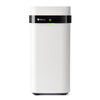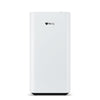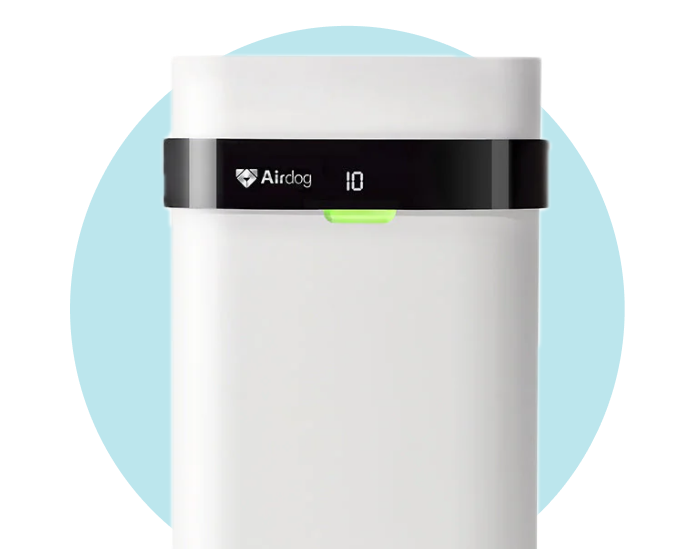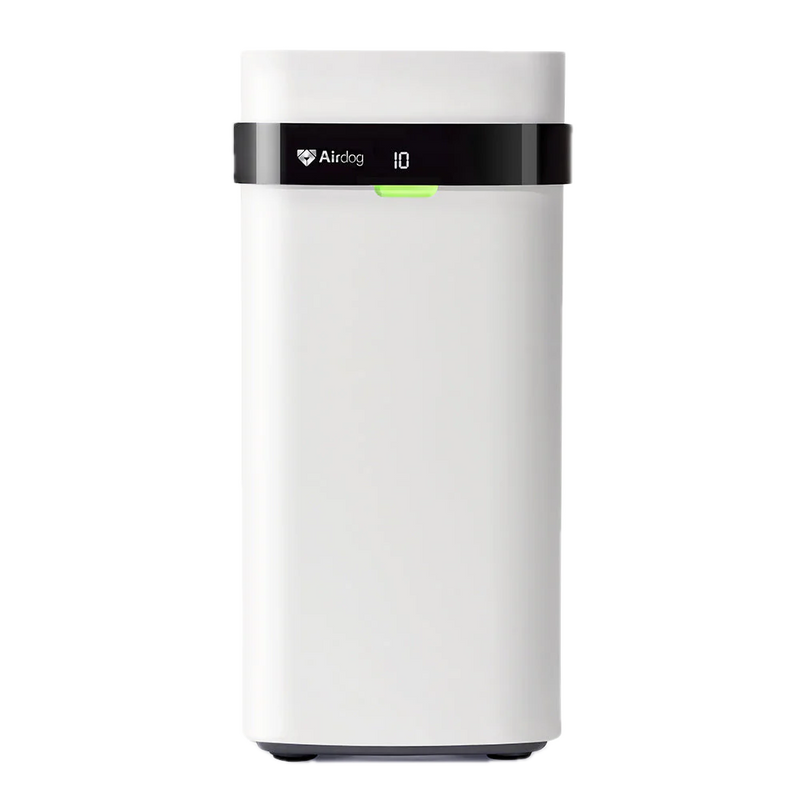Everyday activities like cooking, cleaning, or simply opening a window let in allergens such as dust, pollen, pet dander, and mold spores. For people with allergies, these particles can make daily life uncomfortable—causing sneezing, congestion, itchy eyes, and poor sleep.
If you’ve been wondering do air purifiers help with allergies, the answer is yes: these devices reduce airborne allergens and create a cleaner, healthier home environment. In this article, we’ll break down how they work, what to look for in a quality system, and why the right purifier can bring meaningful relief.
The Science Behind Air Purifiers and Allergies
Air purifiers help with allergies by pulling air through specialized filters that trap or neutralize irritants. By reducing the number of allergens in circulation, they help minimize the triggers that set off symptoms.
Understanding HEPA Filters
-
Definition and Operation: HEPA stands for High-Efficiency Particulate Air. A HEPA filter's design allows it to trap particles as small as 0.3 microns with a 99.97% efficiency rate. This includes common allergens such as pollen, pet dander, dust mites, and mold spores.
-
Filter Layers: The filter consists of a complex web of fibers that capture particles through mechanisms including interception, impaction, and diffusion. These processes ensure that even the most minute particles do not re-enter the indoor air environment.
-
Effect on Allergy Symptoms: By trapping allergens, HEPA filters directly reduce the amount of these substances in the air, which can lead to a noticeable decrease in allergy symptoms for individuals sensitive to these particles.
The Role of Activated Carbon Filters
-
Complementary Action: While HEPA handles solid particles, activated carbon absorbs gases and odors such as cooking fumes, VOCs from cleaning supplies, or smoke. Together, HEPA and carbon create a two-layer approach to cleaner indoor air.
Why Air Exchange Rate Matters
-
Definition and Significance:The effectiveness of any purifier also depends on air changes per hour (ACH)—how often it can cycle the air in a room. A higher ACH means allergens are removed more frequently, which is especially important for larger rooms or households with pets.
Properly equipped air purifiers can indeed play a significant role in reducing allergy symptoms by targeting both particulate matter and gaseous pollutants. This comprehensive approach to air purification highlights the importance of selecting the right air purifier to ensure a healthier, more allergen-free indoor environment.
Air Purifiers vs. Humidifiers: What’s Better for Allergies?
Many people wonder if a humidifier can provide the same relief as an air purifier. The short answer: they serve different purposes.
-
Air purifiers directly remove allergens like pollen, dust, and pet dander from the air.
-
Humidifiers add moisture, which can soothe irritated airways but may also encourage dust mites or mold if humidity is too high.
For most allergy sufferers, an air purifier is the first line of defense, while a humidifier can be used alongside it if dry air worsens symptoms.
Real-Life Results: How Air Purifiers Make a Difference
For many, the benefits are immediate. Allergy sufferers often report:
-
Fewer symptoms: Less sneezing, congestion, and eye irritation, especially during high pollen days.
-
Better sleep: Cleaner air means fewer nighttime disruptions.
-
Improved well-being: Breathing easier leads to better energy and comfort at home.
One study on patients with allergic rhinitis found that using air purifiers reduced medication needs and improved indoor air quality, demonstrating tangible improvements in daily life.
Choosing the Right Air Purifier
Selecting the ideal air purifier demands consideration of several crucial factors to ensure it meets your specific allergy needs. From understanding the importance of room size and filter type to considering noise level and maintenance requirements, making an informed choice can significantly enhance your living environment. When shopping for a purifier, consider:
-
Room size: Match the purifier’s coverage to your space.
-
Air exchange rate (ACH): Look for 4–5 air changes per hour for allergy relief.
-
Filter type: HEPA + carbon filters are standard for allergens and odors.
-
Noise levels: Especially important for bedrooms or study areas.
-
Maintenance costs: Replacement filters can add up quickly.
This is where Airdog stands apart. Unlike traditional HEPA purifiers, Airdog uses reusable, washable technology that captures particles even smaller than HEPA (down to 0.0146 microns). That means it traps pollen, dust, pet dander, smoke, bacteria, and viruses without the need for costly filter replacements. It’s a cleaner, greener, and more effective choice for long-term allergy relief.
Maximizing Your Air Purifier’s Effectiveness
Maintaining your air purifier is not just about prolonging the device's life; it is a critical step in ensuring its effectiveness in allergy management. Regular maintenance helps your air purifier operate at peak efficiency, capturing allergens such as pollen, pet dander, and dust mites before they can trigger allergic reactions. Follow these tips to get the most out of your purifier:
-
Run it continuously during allergy season.
-
Place it centrally, away from walls or obstructions.
-
Clean and maintain filters (or wash them, in Airdog’s case).
-
Pair with other allergy-reducing strategies like vacuuming, using allergen-proof bedding, and keeping pets out of bedrooms.
Integrating these practices maximizes allergen removal and helps maintain a comfortable, healthy indoor environment year-round.
Final Thoughts
Do air purifiers help with allergies? Yes—by capturing and neutralizing the particles that trigger symptoms, they provide meaningful relief and improve your overall quality of life. While HEPA-based purifiers can help, Airdog’s reusable, high-efficiency technology goes further, delivering cleaner air, lower maintenance, and a healthier home for you and your family. Choosing the right purifier isn’t just about removing allergens, it’s about creating a space where you can breathe easier, sleep better, and feel truly at home.





